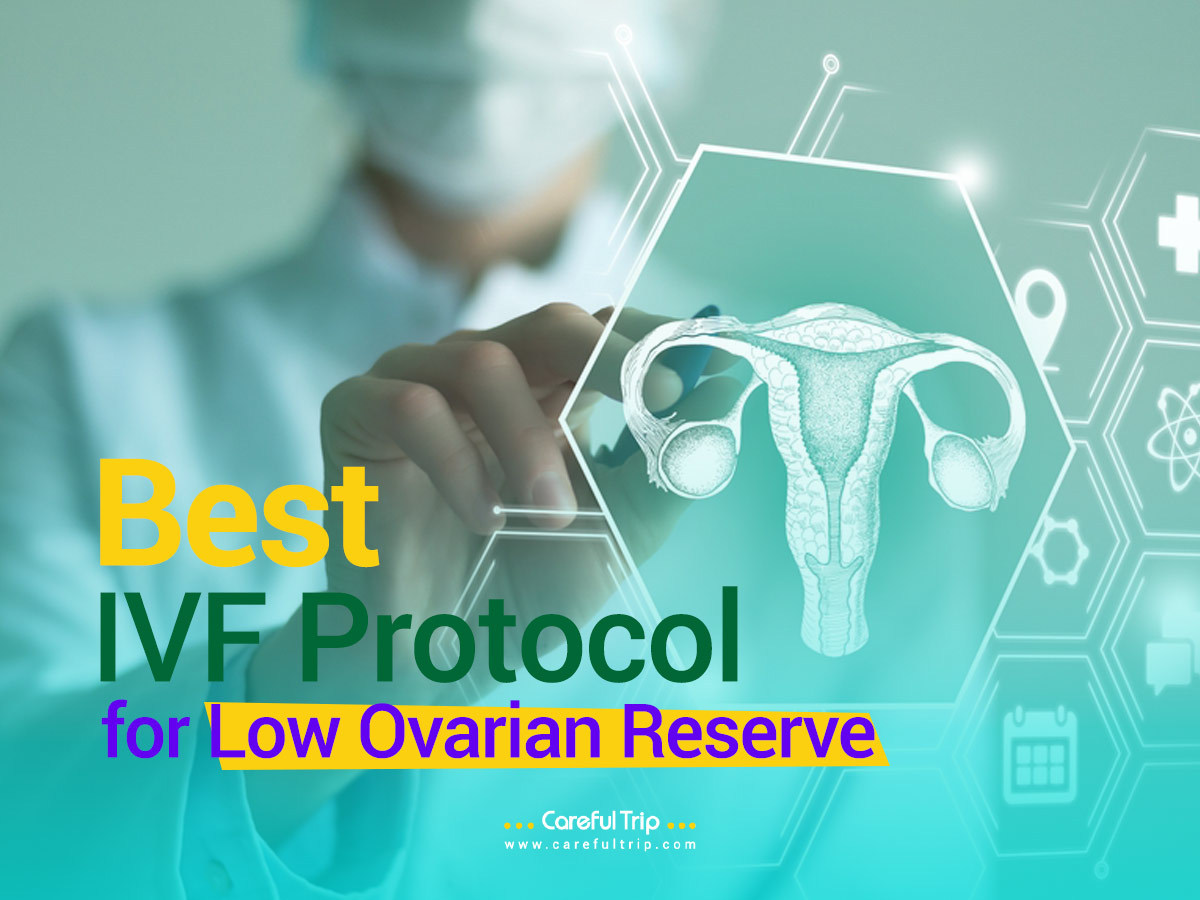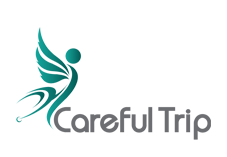
When a woman has low ovarian reserve (LOR), her ovaries generate fewer eggs than is typical for her age. This can make it difficult for her to get fertility treatments like in vitro fertilization (IVF). IVF presents unique challenges for women with low ovarian reserve because of the restricted quantity and perhaps worse quality of eggs available. Reproductive medicine advances, however, have led to the development of specialized regimens that maximize IVF effectiveness for women with LOR.
Selecting the proper IVF protocol is essential for women with low ovarian reserve to optimize the likelihood of a successful pregnancy. A mild or minimal stimulation technique is usually used in the best IVF procedures for poor ovarian reserve. This approach retrieves fewer high-quality eggs instead of a larger quantity of potentially lower-quality eggs. To gently stimulate the ovaries, mild stimulation procedures frequently use lower dosages of gonadotropins or even mix them with oral medicines like Clomiphene Citrate. This method helps to optimize the restricted ovarian response, which is essential for patients with a poor ovarian reserve and lowers the risk of ovarian hyperstimulation syndrome (OHSS).
Using gonadotropin-releasing hormone (GnRH) antagonists in an antagonist protocol to delay ovulation is another successful tactic. This makes it possible to regulate the time of egg retrieval more precisely. In certain instances, a “flare” treatment may also be considered. This technique involves GnRH agonists to cause the ovaries to respond quickly and intensely. Because the “flare” approach can trigger a strong and quick response from the ovaries, thereby increasing the number of eggs recovered, it is advantageous for women with limited ovarian reserve. Furthermore, it has been demonstrated that adding adjuvants such as growth hormone or DHEA (dehydroepiandrosterone) to the treatment plan will help women with decreased ovarian reserve produce more and better-quality eggs. Tailoring the IVF procedure to each person’s unique ovarian response is essential to achieving the best possible outcome.
With that introduction out of the way, let us deepen our understanding of the possible challenges of low ovarian reserve and the best IVF protocols, strategies, and considerations for the condition, which will help you to make informed decisions on your IVF journey with confidence.
Understanding Low Ovarian Reserve
Low ovarian reserve is typically diagnosed through several indicators:
- Antral Follicle Count (AFC): Less than 6–10 tiny follicles in the ovaries indicate low reserve, according to a transvaginal ultrasound count.
- Anti-Müllerian Hormone (AMH) Levels: The hormone AMH is generated by the ovarian follicles. Low levels of AMH (<1.0 ng/mL) indicate a diminished ovarian reserve.
- Follicle-Stimulating Hormone (FSH) Levels: On the menstrual cycle’s third day, elevated FSH levels (>10 IU/L) may be a sign of decreased ovarian function.
For more information, read:
Challenges in IVF for Low Ovarian Reserve
During IVF, women with poor ovarian reserve frequently have several difficulties, such as:
- Lower Egg Yield: During stimulation, fewer eggs are recovered, which lowers the number of embryos that can be transferred.
- Reduced Egg Quality: Women with inadequate ovarian reserve may produce eggs that are more likely to contain chromosomal abnormalities, which can affect fertilization and implantation rates.
- Variable Response to Stimulation: Individualized strategies are necessary since women with LOR may react erratically to traditional stimulation methods.
Best IVF Protocols for Low Ovarian Reserve
Several IVF protocols have been developed to address the specific needs of women with low ovarian reserve. These protocols aim to maximize egg yield and improve outcomes through tailored hormonal stimulation and advanced techniques.
Mild Stimulation Protocol:
- Description: Lower doses of gonadotropins are used to stimulate the ovaries gently.
- Advantages: It imitates natural cycles, lowering the risk of ovarian hyperstimulation syndrome (OHSS) and may enhance egg quality.
- Disadvantages: It may produce fewer eggs; several cycles may be needed to make adequate embryos.
- Studies: Studies show that little stimulation can help women with LOR balance the production and quality of their eggs.
Antagonist Protocol:
- Description: involves using gonadotropin-releasing hormone (GnRH) antagonists to stimulate the ovaries with FSH and LH to delay the onset of ovulation.
- Advantages: Allows for flexible timing of stimulation and reduces the risk of OHSS.
- Disadvantages: Requires careful monitoring to optimize dosing and timing.
- Studies: Because it allows for controlled and adjustable stimulation, the antagonist regimen is frequently utilized and has demonstrated positive outcomes in women with poor ovarian reserve.
Mini-IVF (Minimal Stimulation IVF):
- Description: Combines oral medications such as clomiphene citrate or letrozole with low-dose gonadotropins.
- Advantages: Lower medication costs, reduced side effects, and less intensive monitoring.
- Disadvantages: Typically results in fewer eggs retrieved per cycle.
- Studies: Mini-IVF has gained popularity for women with low ovarian reserve, demonstrating comparable success rates to conventional IVF with fewer side effects.
Dual Stimulation Protocol:
- Description: Utilizes two consecutive ovarian stimulation cycles within the same menstrual cycle—one during the follicular phase and one during the luteal phase.
- Advantages: Maximizes the number of eggs retrieved quickly, increasing the chances of obtaining viable embryos.
- Disadvantages: More intensive and may require more medications.
- Studies: Dual stimulation has shown promising results for women with low ovarian reserve, offering an innovative approach to maximize egg yield.
Additional Strategies to Enhance IVF Success
In addition to tailored protocols, several strategies can further enhance IVF success for women with low ovarian reserve.
1. Pre-Treatment with Androgens:
- Description: Using androgens (such as dehydroepiandrosterone DHEA) in conjunction with IVF can enhance the quality of the eggs and the ovarian response.
- Studies: Pre-treatment androgen administration may increase ovarian reserve markers and improve IVF’s success in women with limited ovarian reserve (LOR).
2. Growth Hormone Supplementation:
- Description: Growth hormone supplementation to ovarian stimulation therapy may enhance the development of follicles and the quality of eggs produced.
- Studies: Mixed results from specific trials suggest that women with poor ovarian reserve may receive benefits from taking growth hormones; more investigation is required.
3. Coenzyme Q10 (CoQ10):
- Description: Antioxidant that helps mitochondria function and could enhance the quality of eggs.
- Studies have demonstrated that CoQ10 supplements may help women undergoing IVF by enhancing their ovarian response and egg quality.
4. Acupuncture and Traditional Chinese Medicine (TCM):
- Description: Acupuncture and herbal treatments enhance blood flow to the ovaries and improve reproductive health.
- Studies: Some studies suggest that acupuncture can improve IVF outcomes, though the evidence is still limited, and further research is required.
Emotional and Psychological Considerations
IVF can be an emotionally and psychologically taxing process, particularly for women who have poor ovarian reserve. Success and general well-being depend on addressing these factors.
- Counseling and Support Groups: Expert counseling and support groups assist couples and women in dealing with the emotional toll that fertility treatments take while also lowering stress levels.
- Mindfulness and Stress Reduction: Yoga, meditation, and relaxation methods can all help reduce stress and enhance mental well-being during in vitro fertilization.
- Open Communication: Recall that having open lines of communication with your partners and healthcare providers is crucial, not just important. It reminds you that you have a group of compassionate experts and loved ones at your side, and it is essential to control expectations and create a supportive environment.
Future Directions in IVF for Low Ovarian Reserve
Advancements in reproductive medicine continue to improve the prospects for women with low ovarian reserve. Future directions include:
- Personalized Medicine: The ongoing research aims to optimize protocols for individual patients by further personalizing IVF treatments based on genetic and molecular profiles.
- Innovative Technologies: Technological advancements like artificial intelligence and time-lapse embryo imaging can potentially improve results for women with loss of pregnancy (LOR) and enhance the process of selecting embryos.
- Regenerative Medicine: New treatments that promise to enhance ovarian function and fertility in women with low ovarian reserve include stem cell therapy and platelet-rich plasma (PRP)-based ovarian rejuvenation.
Conclusion
Low ovarian reserve presents significant challenges in IVF, but with tailored protocols and innovative strategies, many women can achieve successful pregnancies. Understanding the best IVF protocols, additional supportive treatments, and the emotional and psychological aspects of fertility care is essential for optimizing outcomes. With ongoing advancements in reproductive medicine, the future looks promising for women with low ovarian reserve seeking to build their families through IVF.
CarefulTrip helps you navigate the challenges of low ovarian reserves and contemplating IVF treatment, giving you free consultation and the best care possible. Our agency has worked hard to guide hundreds and hundreds of individuals through their fertility journey by providing them with the most affordable prices and the best accommodations possible. Whether you have questions about IVF treatments and protocols or any other general fertility questions, don’t hesitate to contact us today!
